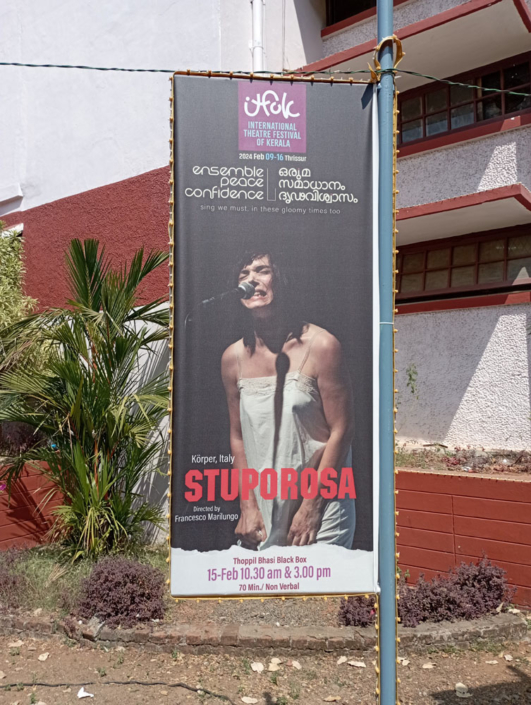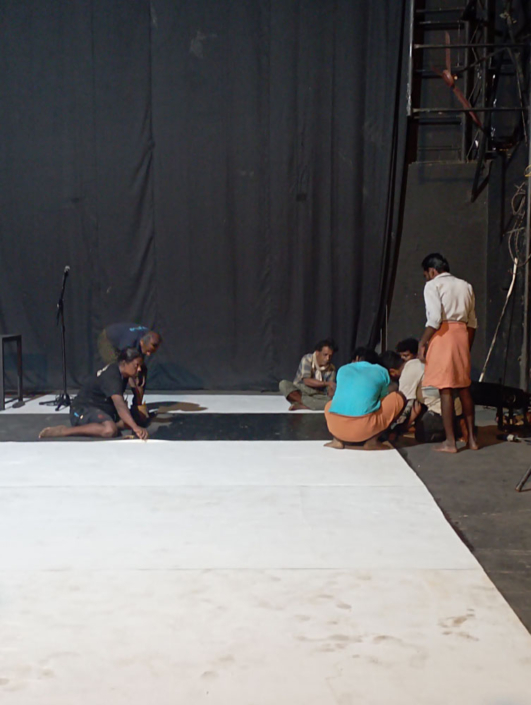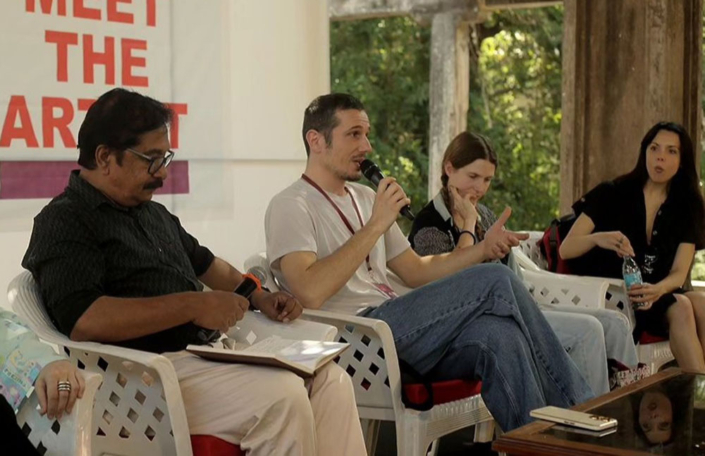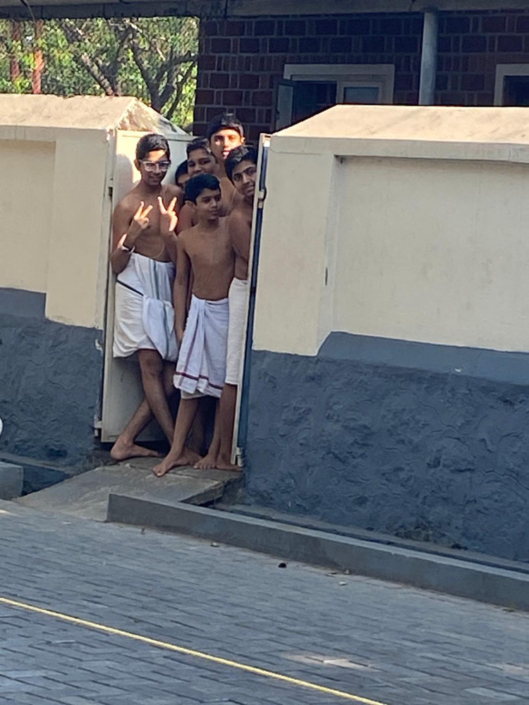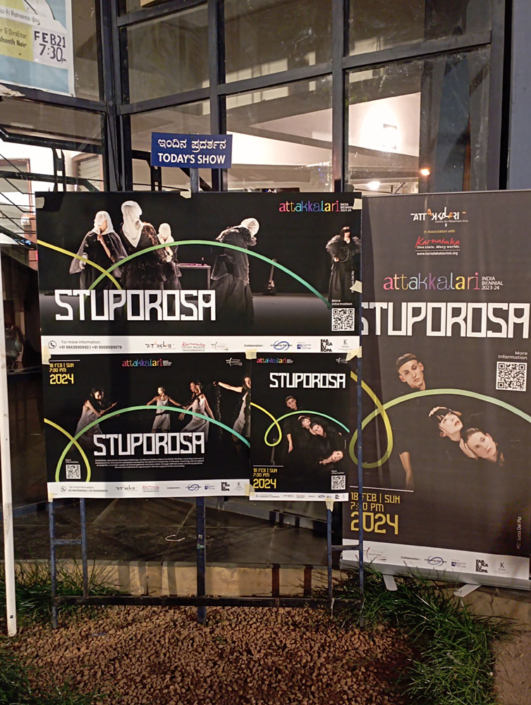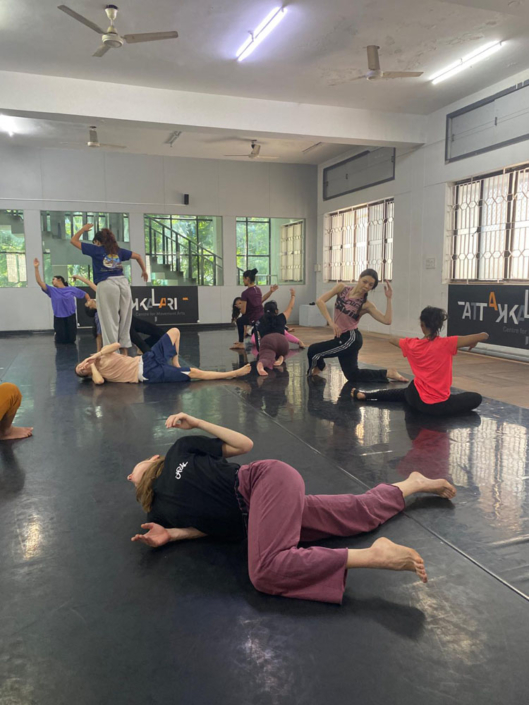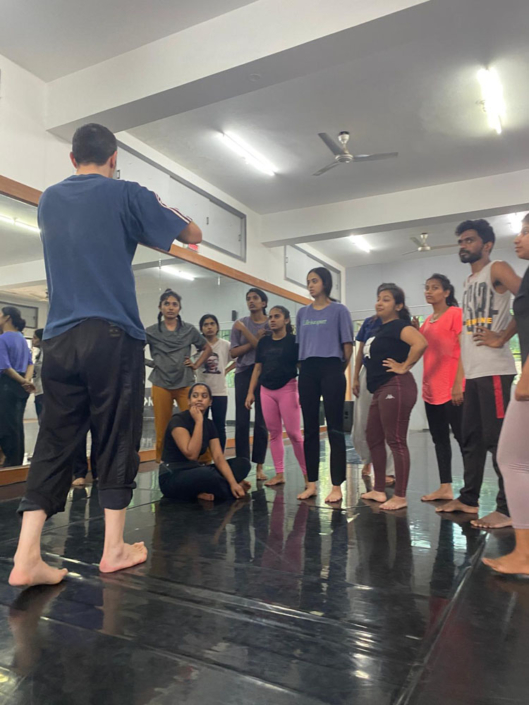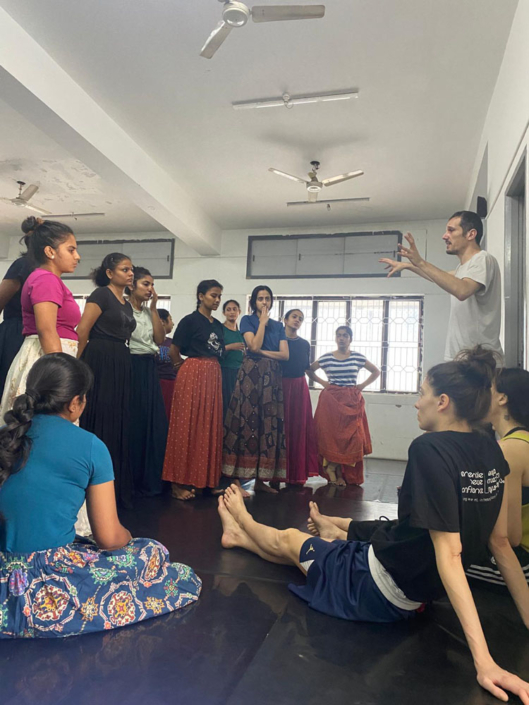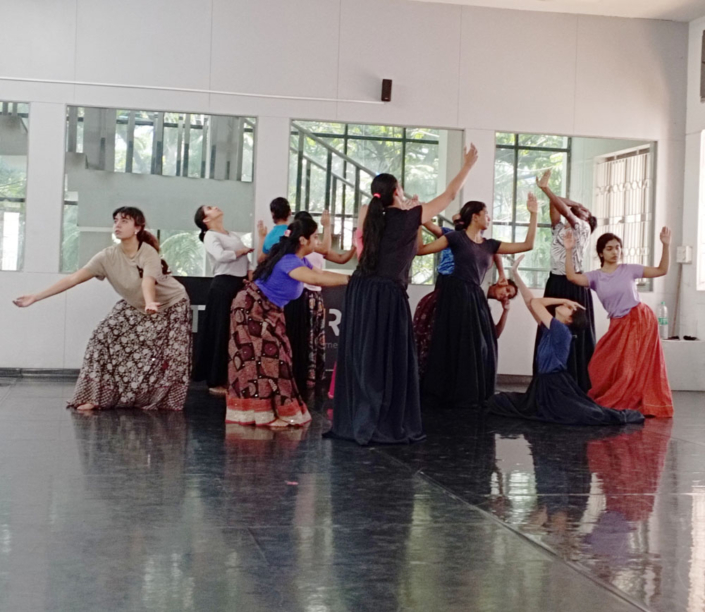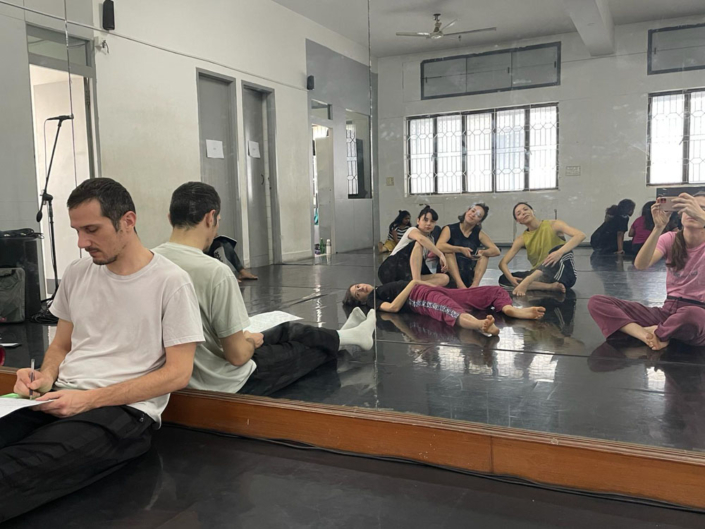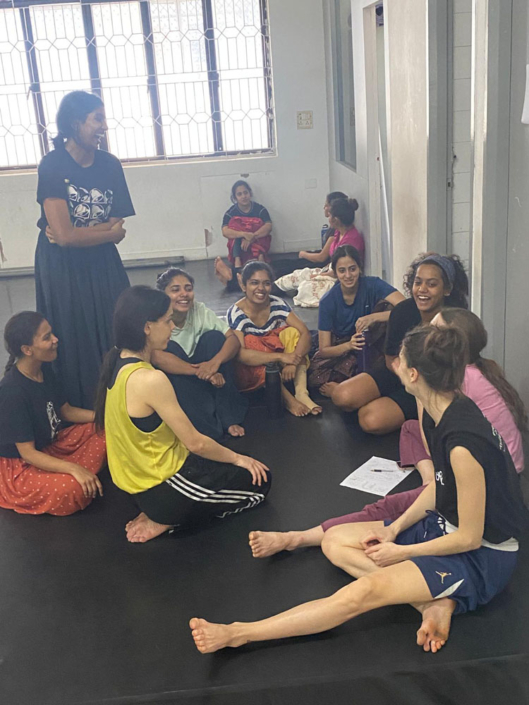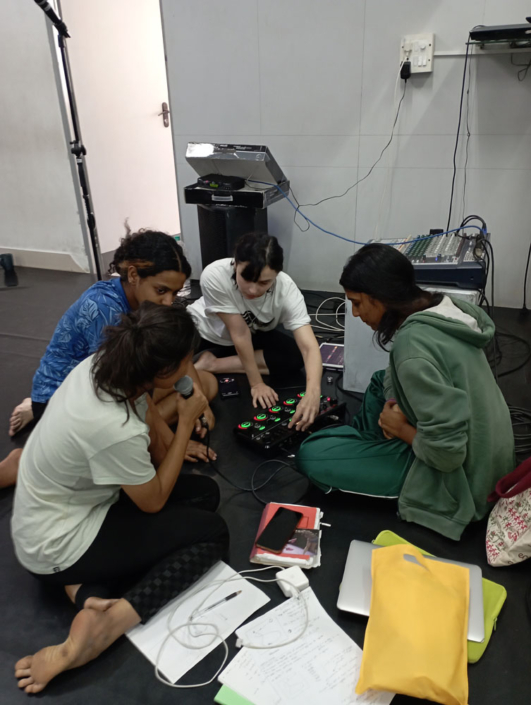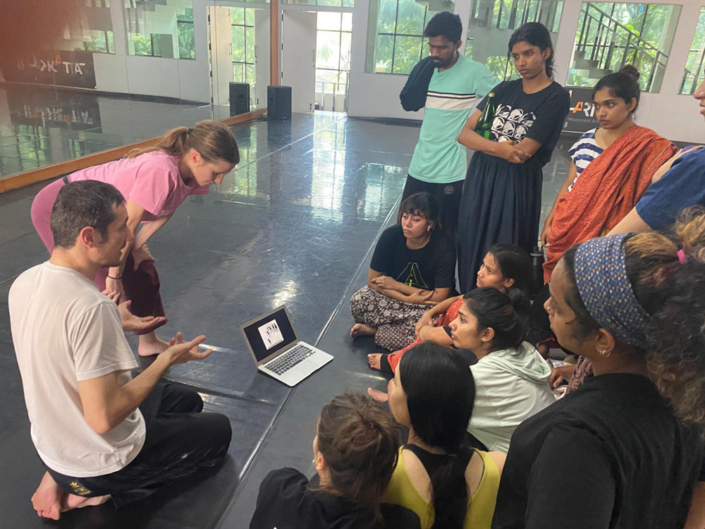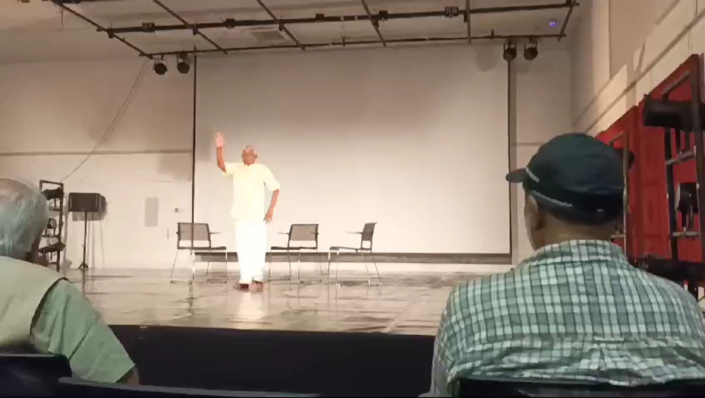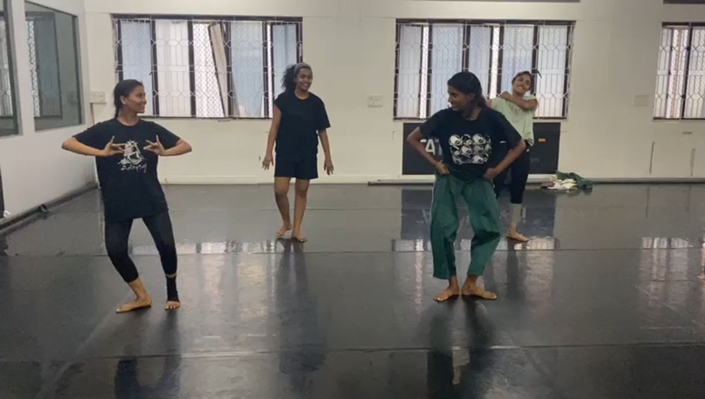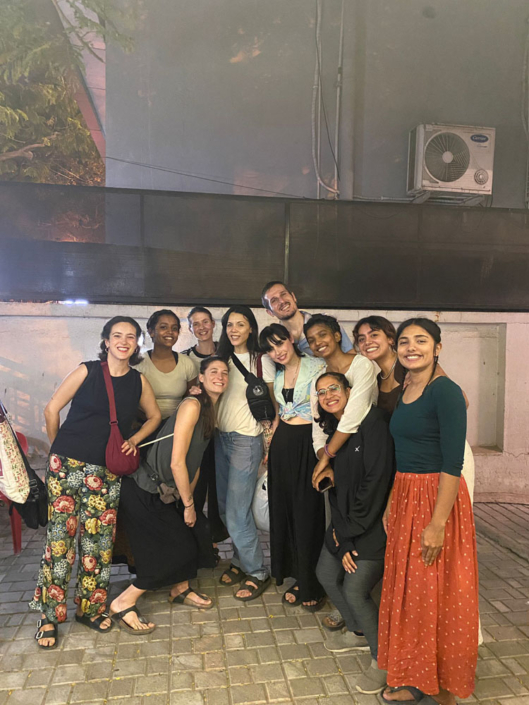From February 13 to 25, 2024, Francesco Marilungo held a “Stuporosa” workshop in India with local artists, hosted by Attakkalari Centre for Movement Arts (Bangalore).
Through the support of Crossing the Sea, it was possible to realize the India tour of Stuporosa, my latest choreographic project on the theme of mourning and funeral lament, while also allowing for a cultural exchange of choreographic traditions and practices.
The tour was divided into two key stops the first one in Thrissur for the Itfok Festival in the Kerala region and the second one in Bangalore in Karnataka on the occasion of the Dance Biennial organized by the Attakkalari center.
In Thrissur, in addition to making two replicas of the performance in the international festival setting, we were able to hold a conference on the themes of the performance and thus activate a discussion with the local community on how to experience death and overcome the crisis of mourning.
The two cultures, the Catholic-Christian culture of the Mediterranean area and the Hindu culture of India, although apparently distant, revealed several aspects in common.
First, it emerged that the figure of the priestess is also present in India. It is a ritual practice particularly prevalent in the Rajasthan region. These women, known as Rudaali, were traditionally paid to mourn the death of male relatives of the royal family. Later, they were also involved in funerals of the families of wealthy landowners. And today they still exist in some small villages.
All Rudaali are widows belonging to the lowest castes and victims of a strong social stigma as they are considered ominous, marginal beings to Indian society just as a woman who loses her husband generally is. And because of this they are often forced to live outside the village in houses made of straw and mud.
Rudaali publicly express the grief of members of those families who are not allowed to show emotion because of their social status. Just like the prefics of southern Itala, dressed in black, they sit and weep crying loudly, beating the ground, beating their chests and chanting litanies whose lyrics refer to the deceased person’s life. The impact of their weeping induces all the people present at the funeral to weep.
It is interesting to point out the state of marginality shared by Indian and Italian prefects, a marginality that in some ways allows them to be able to relate to death, considered in both cultures a disease, as something contagious.This marginality gives them access to the world of the dead, making them assimilable to newly deceased people who, while waiting to enter an otherworldly dimension, also live in a liminal state.
In addition to the lecture, Itfok Festival management arranged for the company to meet with young Brahmins from the Vedic chanting school in the village of Thirunaavaaya on the banks of the Nila River. One of only two schools left in Kerala.
The Indian tradition of Vedic chanting è was recognized in 2003 as a UNESCO World Heritage Site as a masterpiece of the Oral and Intangible Heritage of Humanity. The Indian Vedas which are classified into four types – the Ṛgveda (hymns), the Yajurveda (sacrificial formulas), the Sāmaveda (chants) and the Atharvaveda (magical formulas) – are considered to be of non-human origin (apaurus·eya), beginningless (anādi ) and eternal (nitya).This realization prompted the Brahmins of India to create unique methods for their preservation and transmission without altering a single accent. These methods are based on sophisticated mnemonic techniques.
The Kerala Vedic chants of the Nambudiri Brahmins are considered the most ancient in’India-chants that are more than 3,000 years old, handed down solely orally from father to son or master to student.
Entering the Thirunaavaaya school and being able to listen to the young students was a real privilege (non-Hindu Westerners are not allowed in), an experience of indescribable emotional impact. Knowing the theme of our research, they performed for us some Yajurveda, or sacrificial formulas used during the funeral ceremony. Death, cremation and funeral rituals are actually considered in the Hindu religion as the last sacrifice, that act that allows the transition to a new life. And Vedic chants facilitate precisely this moment of transition.
At the end of their performance, their teacher asked if we could share some traditional Italian chants, and Vera Di Lecce sang some Salento funeral laments, eliciting a few laughs from the young Brahmins, perhaps because of the obvious difference in sound.
Despite the dissimilarity in melody and rhythm, there were some similarities in the physical score that accompanied the songs. The young Brahmins, just like the Salentine mourners, used oscillatory movements of the torso and head, probably to trigger a state of trance, that state of ‘dreaming concentration’ of which Ernesto De Martino also speaks referring to the rite of funeral lamentation in southern Italy.
During the second leg of the tour we presented Stuporosa at Ranga Shankara, one of Bangalore’s most famous theaters, and held a week-long workshop with performative outcome with 22 local dancers (14 students and 8 professionals) at the Attakkalari center.
With the 14 students we worked on the figures of pathos that underlie the rituals of funeral lamentation and how to achieve weeping through an altered physical state of the body.
Vera Di Lecce also tried to pass them some basic principles for composing musical pieces through the loop station.
The 8 professional dancers were taught the white handkerchief dance of Stuporosa. A reinterpretation of the physical score that the mourners did around the body of the deceased to facilitate their entry into the world of the dead. Also present in the dance are elements of the traditional Salento pizzica.
In Bangalore, too, we were able to trigger an exchange of cultures and traditions. By talking with local dancers about the genesis of Stuporosa and explaining how the various movement qualities used came about, we were able to introduce them to some Italian ritual practices aimed at overcoming the crisis of mourning-ancient cultural institutions that operate on a symbolic level and are based on individual-community mutual aid relationships.
On the other hand, Attakkalari, being a center that bases its research on teaching methodologies and philosophy of movement in Indian artistic traditions, brought us closer to the customs of India in the choreographic arts. Students showed us some steps of Bharatanatyam, an Indian folk dance recoded in the 1930s from an ancient liturgical dance.
And we were invited to the Goethe Institut in Bangalore for the presentation of the Nagarika project, an interactive online archive of Indian somatic traditions and contemporary expressions. On this occasion we had the opportunity to see a live performance of some sequences of an ancient Indian martial art, Kalarippayattu, by one of the oldest surviving masters.

